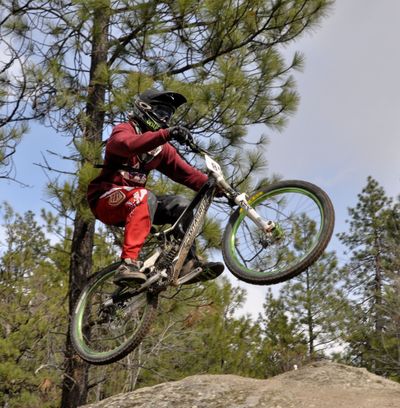Mount Spokane trail plan to accommodate downhill cycling

New efforts to accommodate mountain biking are included in a Mount Spokane State Park revised trails plan recently released for public comment.
The plan identifies 76 miles of multi-use trails in the 14,000-acre park.
Revisions to the plan propose continued sharing of trails among mountain bikers, hikers and equestrians while developing new trails specifically designated for downhill bikers.
The growing interest in high-speed downhill riding on specially designed mountain bikes has been criticized as dangerous and incompatible on the same trails with other user groups such as hikers, horse riders and nature observers.
The original 2009 document was approved after years of meetings by state parks staff and the Mount Spokane Advisory Committee. Mountain bikers who felt slighted by the plan requested more meetings, which resulted in the proposed revisions.
“Every effort will be made to minimize these conflicts and ensure that ongoing patterns of conflicting behavior do not develop or are mitigated by thoughtful planning,” the document says.
Mount Spokane is among the few state parks that offers extensive trail access to equestrians. The plan seeks to protect that rare opportunity, but the proposal calls for horse riders sharing some popular trails with bicycles.
The plan does not specify a bike-free trail hikers or horse riders could follow from the park entrance to the summit of Mount Spokane.
The park also has 31 miles of groomed cross-country skiing trails, making it one of the largest nordic ski systems in the United States. Additional routes are expected to be added this winter, said Steve Christensen, park manager.
The nordic trails are used by other user groups during summer, he said.
“Most of the trail uses get along just fine, but there can be issues with the speed of the downhill mountain bikes,” he said.
The plan revision calls for a new route from the summit to the park entrance on the east side of the mountain designated for downhill bicycling. Other trails would be considered, all incorporating the technical turns and jumps preferred by the downhill specialists, who often wear protective helmets and clothing similar to dirt bike motorcycle riders.
From Mount Spokane’s summit, proposed downhill specialty Trail 290 would be built to the south of the downhill ski area concession’s Chair 1 and down to the bottom of the B-29 ski run. From there, the route would follow the existing Trail 132 down and across the paved road and continue on new single-track routes parallel to Trails 120 and 122 to the park entrance.
The plan also calls for modifying some existing trails on the route “to make them more interesting and challenging for mountain biking than any other route in the park.”
The plan stipulates that mountain bikers would be responsible for maintaining the route, which would require dozens of high-banked curves.
Meantime, mountain bikers are being asked to use Trail 140 down from the summit to minimize the traffic competing with hikers and equestrians on 100 and 110, said Cris Currie, state park advisory committee chair.
Some of the features in the revised plan proposals are likely to be debated, including suggestions parks staff has added on page 6 for additional mountain biking trails in the Deadman Creek and Burping Brook drainages.
“There’s likely to be changes to the proposals,” Christensen said. “The plan is still conceptual. Before any trails are built, we’ll be walking them and marking them to make sure they work. And then we’ll still have to get the permits. There’s a lot to do.”